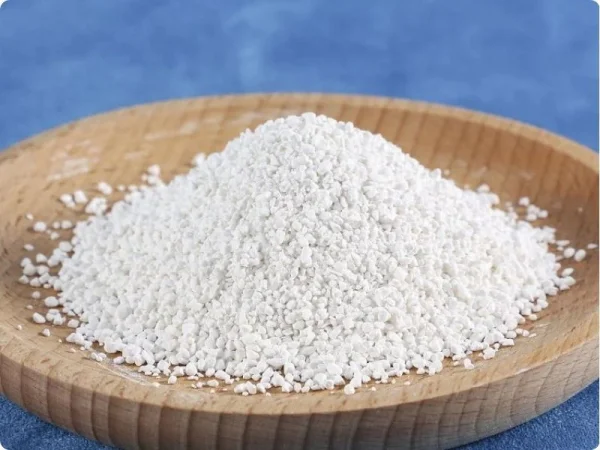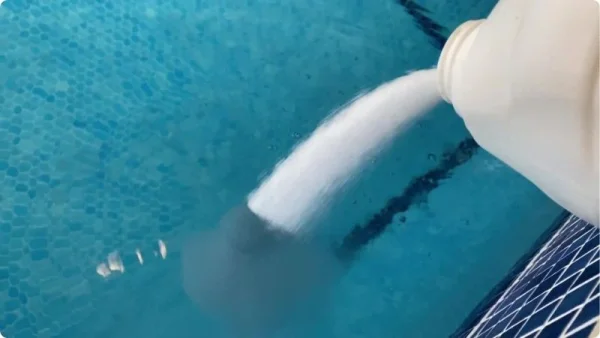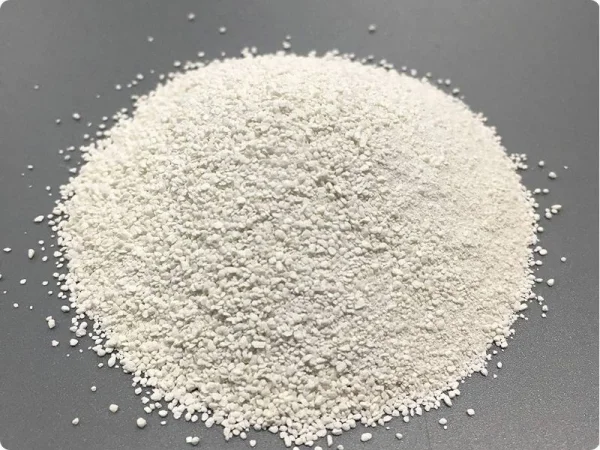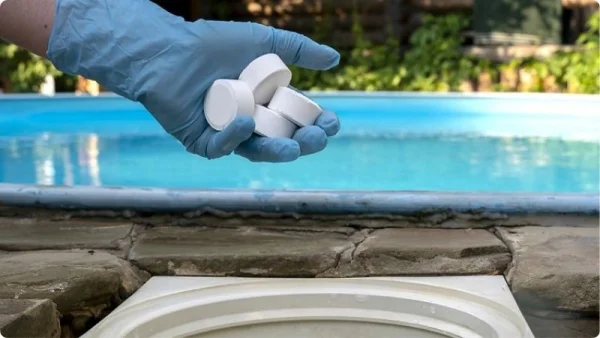
Chlorine has long been the go-to sanitizer for pools and spas, but have you heard of its lesser-known cousin, bromine? While both are effective at keeping water clean and safe, they differ in several key ways. Understanding the distinctions between chlorine and bromine sanitizers is crucial for making an informed choice that best suits your pool or spa's needs. In this comprehensive guide, we'll delve into the nitty-gritty of how each sanitizer works, their respective advantages and disadvantages, and which one might be the ideal option for your specific setup.
How Chlorine and Bromine Sanitize Water
To truly understand the battle of chlorine and bromine, we need to examine how each sanitizer works to keep your pool or spa water free from contaminants.
Chlorine is an oxidizing sanitizer, meaning it neutralizes contaminants through a process called oxidation. When added to pool or spa water, chlorine molecules immediately target and penetrate unwanted particles, stripping away their electrons and breaking them down. However, this process leaves behind waste byproducts called chloramines, which are responsible for the intense chemical odor and potential skin irritation associated with chlorine. To clear chloramines and restore the active, sanitizing chlorine molecules (known as Free Available Chlorine), pool owners must perform a process called breakpoint chlorination, which involves shocking the water with high chlorine levels.
In contrast, bromine sanitizes through a different mechanism called ionization. During this process, bromine particles attack and break apart the molecular bonds of pollutants. Unlike chlorine, bromine produces bromamine molecules after ionization, which continue to sanitize the water. These bromamines can be reactivated and returned to their full strength by adding a chlorine-free pool shock, making bromine a more efficient and longer-lasting sanitizer in some cases.
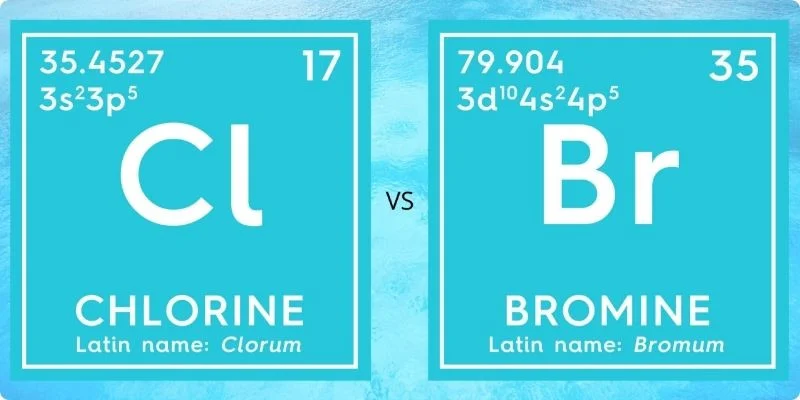
How Chlorine and Bromine Sanitize Water
Differences in Forms and Application
Beyond their distinct sanitization methods, chlorine and bromine also differ in the forms they come in and how they are applied to your pool or spa.
Chlorine is available in various forms, including tablets (the most common), sticks, granules, and liquid. Tablets and sticks can be used in floating dispensers or in-line and off-line chlorinators, while granular chlorine needs to be pre-dissolved before dispersing throughout the pool. The ideal chlorine levels for pools range from 2.0 to 4.0 parts per million (ppm), and for spas, from 2.0 to 5.0 ppm.
Bromine, on the other hand, comes primarily in tablet and granular form, with a few liquid options available. Due to its slow-dissolving nature, bromine works best in floating dispensers and is less suitable for in-line or off-line chlorinators. Building up a bromine residual in the water takes longer, and if levels drop suddenly, a bromine booster is often necessary to quickly raise them. The recommended bromine levels are 2.0 to 4.0 ppm for pools and 4.0 to 6.0 ppm for spas.
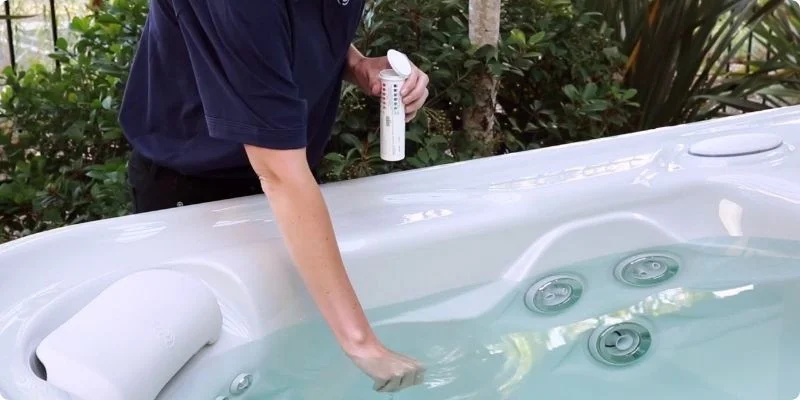
Differences of chlorine and bromine in Forms and Application
The benefits and drawbacks of chlorine and bromine
Like most things, both chlorine and bromine sanitizers have their own unique pros and cons to consider when deciding which one is right for your swimming pool or spa.
Chlorine offers several advantages, including a lower cost compared to bromine, compatibility with cyanuric acid (a stabilizer that protects chlorine from UV evaporation), faster sanitization, and strong oxidizing power. Additionally, adjusting chlorine levels up or down is generally more straightforward than with bromine.
Bromine, on the other hand, excels in certain areas. It remains effective at higher pH levels and stable in warmer water temperatures, making it an excellent choice for spas. Bromamines retain their killing power longer than chloramines, and they don't gas off the water surface like chloramines do, reducing the risk of indoor air quality issues. Many people also find bromine to be gentler on the skin and eyes than chlorine.
However, bromine does have its drawbacks. It is typically more expensive than chlorine, has less oxidizing power, and is not recommended for outdoor pools due to its sensitivity to UV light from the sun. Chlorine can cause eye and skin irritation for some individuals and may produce a strong, unpleasant odor. Additionally, salt chlorine systems can potentially wear down vinyl liners and concrete pools over time.
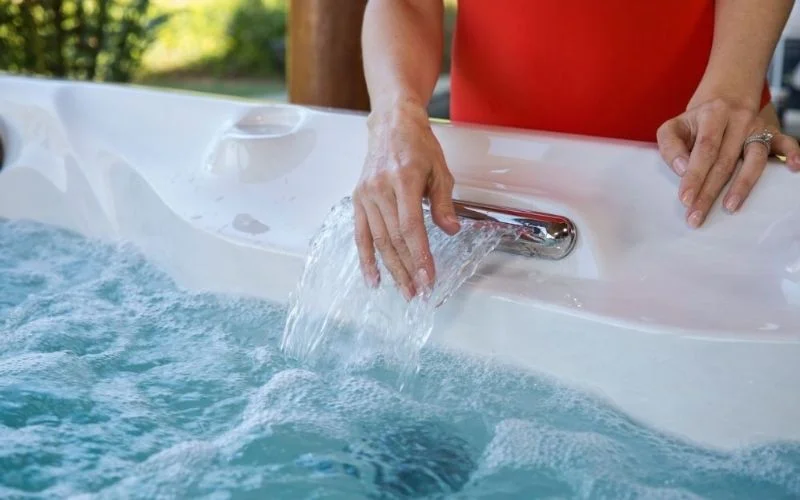
The benefits and drawbacks of chlorine and bromine
FAQs and Special Scenarios
While we've covered the key differences between chlorine and bromine sanitizers, you may still have some specific questions or considerations. Let's address some frequently asked queries and special scenarios related to using these sanitizers in your pool or spa:
Can you shock a bromine pool?
Yes, you can shock a bromine pool with either non-chlorine or chlorine shock. The shocking process oxidizes contaminants and creates bromamines, which are not harmful. Follow the dosing instructions on the shock product, as the standard dose for a chlorine pool is typically sufficient for a bromine pool as well.
Is bromine suitable for outdoor pools?
While bromine can be used in outdoor pools, it is generally not recommended. Bromine is not compatible with cyanuric acid (CYA), a chemical that protects chlorine from evaporating due to UV exposure from the sun. Without CYA, bromine is at a high risk of evaporating quickly in outdoor pools.
Which sanitizer is better for indoor pools?
Bromine is often the preferred choice for indoor pools that receive little or no direct sunlight. Bromamines do not "gas-off" the surface of the water like chloramines, making them less likely to contribute to poor indoor air quality or cause corrosion of metal structures like pool ladders and furniture.
How do you switch from chlorine to bromine, or vice versa?
Switching from chlorine to bromine is relatively simple – stop using chlorine tablets and begin using bromine tablets instead, replacing any existing chlorine floaters or in-line chlorinators to prevent cross-contamination. However, going from bromine to chlorine requires a full pool drain to remove the buildup of bromine ions, which would otherwise convert added chlorine back into bromine. After draining, replace any existing bromine dispensers with new ones before adding chlorine.
Conclusion
Choosing between chlorine and bromine as a sanitizer for your pool or spa ultimately comes down to your specific needs and circumstances. Neither option is universally better than the other – each has its own strengths and weaknesses. Carefully consider factors like pool or spa location (indoor or outdoor), water temperature, pH levels, and personal preferences regarding cost, odor, and potential irritation. By thoroughly evaluating the pros and cons of each sanitizer, you can make an informed decision that ensures your pool or spa water remains clean, safe, and enjoyable for years to come.
Related Articles
Chlorine Granules vs Chlorine Tablets: Which is Better for Treating Water?
When it comes to treating water for swimming pools, industrial processes, or household uses, ...
A Comprehensive Guide to Chemicals for Pools
When it comes to maintaining a pool, using the right chemicals is crucial for ensuring the water is ...
Liquid Sodium Hydroxide 32% - 50%
Product Description Product name Liquid sodium hydroxide 32% - 50% Another name Liquid sodium ...
Everything You Need to Know About Chlorine Granules for Pool Sanitation
When it comes to maintaining a clean and hygienic swimming pool, chlorine granules , commonly known ...
Exploring the Different Types of Chlorine Used in Water Treatment
Water treatment and disinfection are essential for maintaining the safety and quality of our water ...
Finding the Best Chlorine for Your Pool: A Comprehensive Guide
Chlorine is the backbone of pool sanitation, responsible for killing harmful bacteria, viruses, and ...

